I've been searching around the internet today trying to figure out how to run DFS on an adjacency list vector<list<edge>> adjA, but I just cannot figure out how to do this correctly. The best example I could find online was: Find connected components in a graph
but using his first method does not seem to work and I am not confident enough with unions / sets to try his other method. This is what I have so far: (disregard test_vector and cc, I'm focusing on getting the cc_count to work)
edge is a struct that contains:
struct edge{
int to; //copy of to_original (dont worry about this it's for a different functionality)
int w; //weight of edge
int from_original; //from vertex
int to_original; //to vertex
}
somewhere in int main:
cout << "conn: " << connected(adjA, test_vector) << endl;
int connected(vector<list<edge>> &adjA, vector<short int> &cc){
int v_size = adjA.size();
vector<bool> discovered(false,v_size);
int cc_count = 0;
for(unsigned int u = 0; u < adjA.size(); u++){
if(!discovered[u]){
cout << u << endl;
discovered[u] = true;
cc_count+=1;
dfs(adjA,discovered,cc,cc_count,u);
}
}
return cc_count;
}
void dfs(vector<list<edge>>&adjA, vector<bool> &discovered, vector<short int> &cc, int &cc_count,int u){
for(unsigned int v = 0; v < adjA[u].size();v++){
if(!discovered[v]){
cout << v << endl;
discovered[v] = true;
dfs(adjA, discovered,cc,cc_count,v);
}
}
}
from the line cout << v << endl; and cout << u << endl it will print showing that it was able to visit every node once. However, I am incrementing the cc_count incorrectly I think. In this adjacency list:
0->[1]->[3]->[5]
1->[0]->[2]->[3]->[4]
2->[1]->[4]
3->[0]->[1]->[4]->[5]
4->[1]->[2]->[3]->[5]->[6]
5->[0]->[3]->[4]->[6]
6->[4]->[5]
the program will output:
0
1
2
3
4
5
6
conn: 7
when conn should be 1, since the whole graph is a single component. I feel like I might be going about this the wrong way. Is there a change I should do? Is there a better way to do this using DFS or BFS?
I apologize for the poor formatting, I spent almost an hour just trying to get the stack overflow errors to go away.
graph represented by adjacency list
